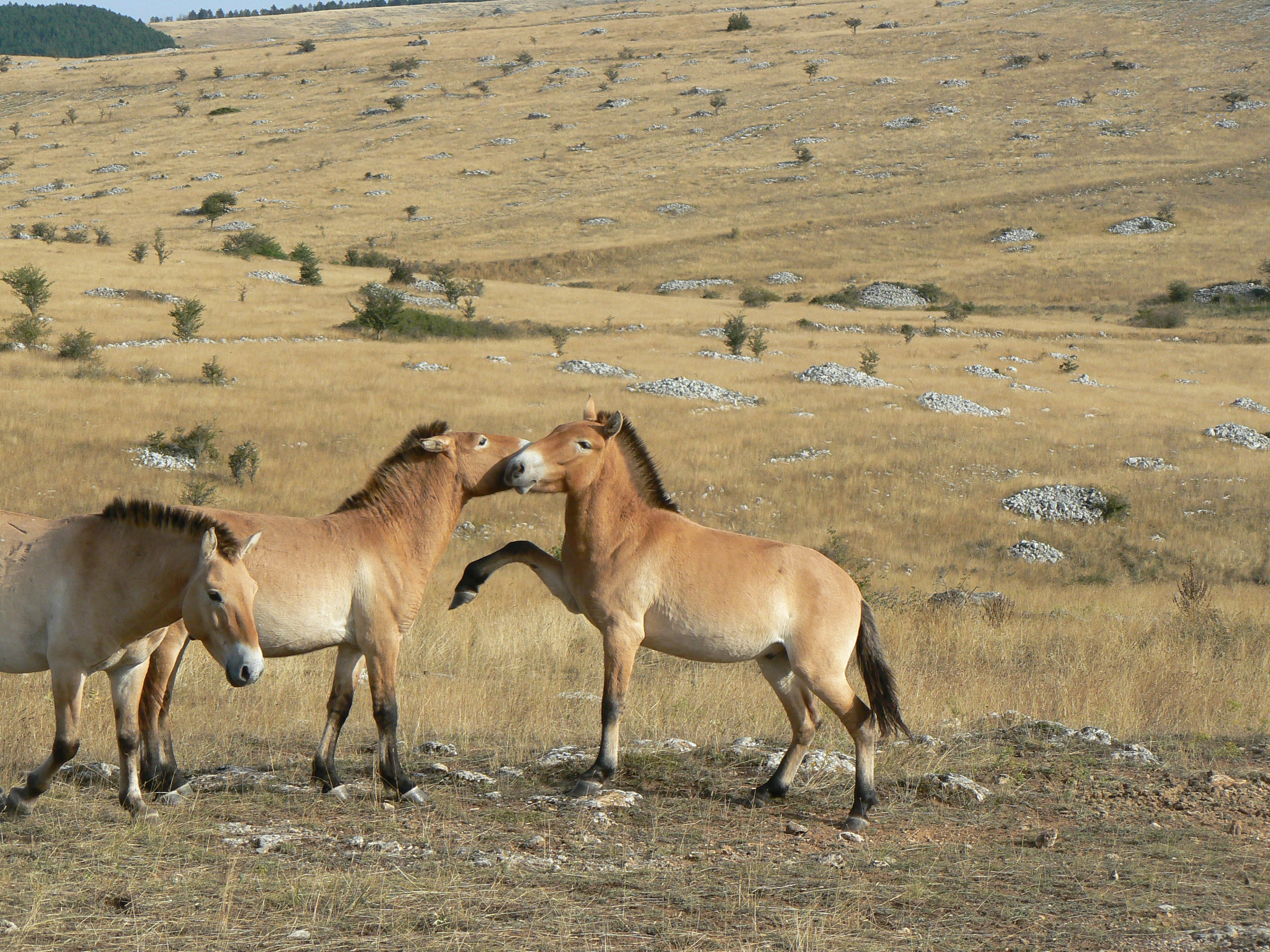Przewalski's Horse occupied the eastern Eurasian steppes, perhaps from the Urals to Mongolia, although the ancient border between Tarpan and Przewalski distributions has not been clearly defined. Przewalski's Horse was limited to Dzungaria and western Mongolia in the same period, became extinct in the wild during the 1960s, but was re-introduced in the late 1980s to two preserves in Mongolia. Although researchers such as Marija Gimbutas theorized that the horses of the Chalcolithic period were Przewalski's, more recent genetic studies indicate that Przewalski's Horse is not an ancestor to modern domesticated horses.Przewalski's Horse is still found today, though it is an endangered species and for a time was considered extinct in the wild. Roughly 1500 Przewalski's Horses are protected in zoos around the world.
A small breeding population has been reintroduced in Mongolia.As of 2005, a cooperative venture between the Zoological Society of London and Mongolian Scientists has resulted in a free-ranging population of 248 animals in the wild.Przewalski's Horse has some biological differences from the domestic horse; unlike domesticated horses and the Tarpan, which both have 64 chromosomes, Przewalski's Horse has 66 chromosomes due to a Robertsonian translocation. However, the offspring of Przewalski and domestic horses are fertile, possessing 65 chromosomes.
Conservation Staus:

Critically Endangered (IUCN 3.1)
Where are they? The world population of these horses are all descended from 9 of the 31 horses in captivity in 1945.These nine horses were mostly descended from approximately 15 captured around 1900. A cooperative venture between the Zoological Society of London and Mongolian scientists has resulted in successful reintroduction of these horses from zoos into their natural habitat in Mongolia; and as of 2005 there is a free-ranging population of 248 animals in the wild. The total number of these horses according to a 2005 census was about 1,500.
Other names for Przewalski's Horse:
Equus ferus przewalskii
Mongolian: Тахь
Takhi
simplified Chinese: 野马
traditional Chinese: 野馬
Yěmǎ
Dzungarian Horse


I have seen them at the San Diego Zoo and been very impressed by their beauty and hardiness.
ReplyDelete